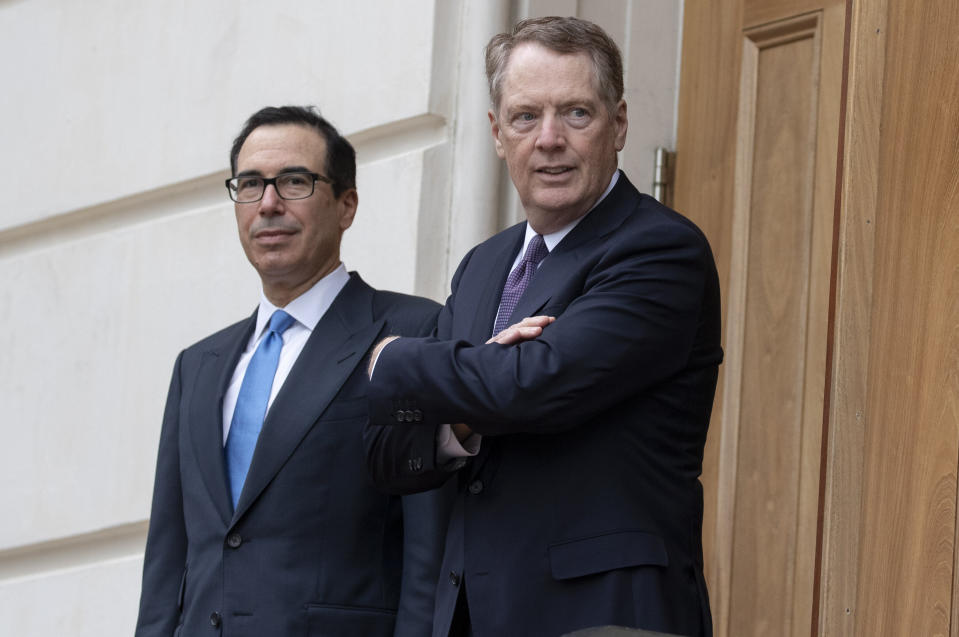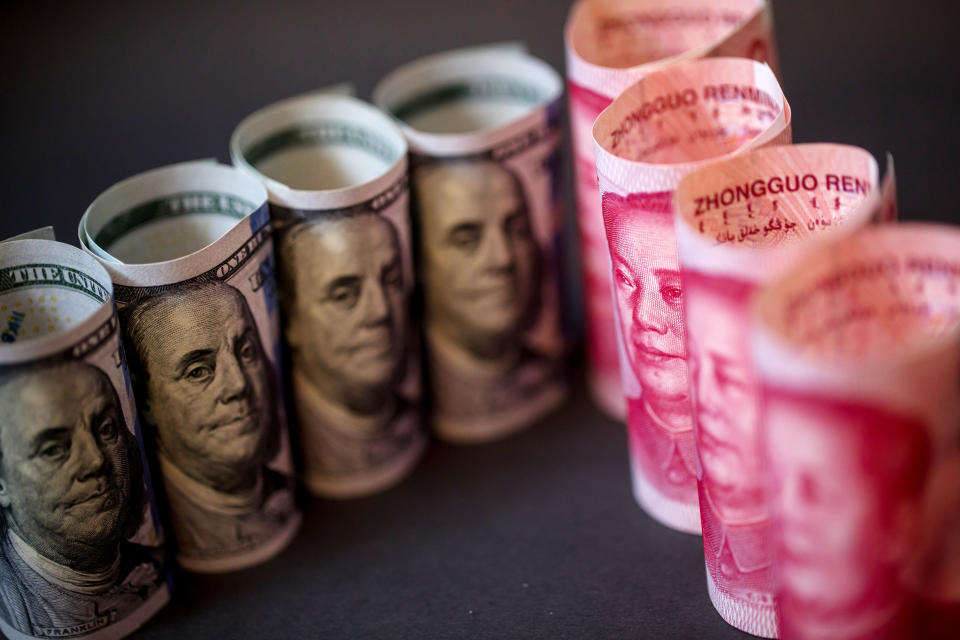Here's how much new Trump tariffs could cost American households
President Donald Trump’s new round of tariffs on China levied in May is likely to cost the average American household hundreds of dollars.
Using their findings from costs imposed on consumers from the 2018 tariffs, New York Fed economists estimated that the annual cost jumped to $831 this year from $419 from the last round of tariffs last year. They added that “higher tariffs are likely to create large economic distortions and reduce U.S. tariff revenues.”
Trump’s tariffs on Chinese goods that went into effect on May 10 — from 10% to 25% — add to a rise in costs in the form of two components: an added tax burden faced by consumers and a deadweight or efficiency loss.
Added tax burden
The “added tax burden” refers to how much additional money U.S. purchasers of imports have to shell out to cover the cost of tariffs.
The NY Fed economists said that the magnitude of these costs would ultimately depend on “how a tariff affects the prices charged by foreign exporters and the U.S. demand for imported goods.”
And since Chinese exporters did not reduce their prices, they found that a 10% tariff reduced import demand by 43%, which then means that U.S. purchasers of imports now pay an “import tax” on top of the base price.

This additional cost is then passed on from the purchaser to the consumer who ends up paying more.
Deadweight loss
The second component called “deadweight loss” refers to firms having to shift from their reliance on Chinese goods to less efficient — but relatively cheaper — sources. This then creates a “deadweight or efficiency loss.”
For example, if a company has been relying on Chinese imports that have cost them $100, a 10% tariff pushes that price up to $110.
But wanting to save costs, if that company chooses a cheaper option to purely suppress costs, and ends up choosing a less efficient firm offering the same good at $109, there is still a $9 increase in price in the supply chain. And “economic theory tells us that deadweight losses tend to rise more than proportionally as tariffs rise because importers are induced to shift to ever more expensive sources of supply as the tariffs rise,” the researchers added.

The $831 estimate, they added, was based on a situation where imports from China can altogether be substituted from other foreign suppliers or completely stopped.
Overall, “our results imply that the tariff revenue the U.S. is now collecting is insufficient to compensate the losses being born by the consumers of imports,” they concluded in their study of the 2018 tariffs.
Other estimates
The NY Fed estimates aren’t the only ones to spell trouble for Americans.
A study from the Trade Partnership Worldwide looked at four different scenarios related to the tariffs.
Their base scenario looks at the steel and aluminum tariffs in effect, 25% tariffs on U.S. imports of Chinese goods, and retaliatory tariffs from the Chinese. “The average American family of four will have to find an extra $767 to pay for higher costs for goods and services resulting from the tariffs, for every year they are in effect,” according to the study. It also projects that “the one-time net impact” on U.S. jobs will be 934,700 jobs lost, and that every state will experience net job losses.
The second scenario builds off of the base scenario, but also factors in retaliatory tariffs from China and 25% tariffs on automotive parts parts imported from countries other than Canada, Mexico, the EU, Korea, and Japan. Based on these calculations, a family of four would pay an additional $902 a year, and 1,040,200 jobs would be lost.
Scenario No. 3 looked at the impact of the base scenario but instead of looking at auto imports, it factored in U.S. tariffs on 25% of remaining imports from China and Chinese retaliation. This would lead to an annual impact of $2,294 on a family of four.
The final scenario combined the previous three and found that this would cost a family of four $2,389 annually, and a one-time net impact of 2,235,400 U.S. jobs lost.
Politico reported on a different study from the Peterson Institute for International Economics, which found that “the China tariffs amount to a tax hike of about $550 per American family.” Additionally, if the 25% tariffs were to go through on the $500 billion worth in Chinese imports, it could lead to a $2,200 tax hike on the average family of three, according to Politico.
‘There is going to be a lot of pain’
Although these studies put an actual number on the impact of the tariffs, it’s not the first time that the consumer effect has been brought into the spotlight.
After it became clear that the U.S. was unable to reach a trade deal with China, the National Retail Federation and the Footwear Distributors and Retailers of America both spoke out, emphasizing that more tariffs will lead to increased costs for consumers.

“The impacts from the trade dispute with China, especially if it snowballs from here, are going to be felt and there is going to be a lot of pain,” Beth Ann Bovino, chief U.S. economist at Standard & Poor’s, told Politico.
Aarthi and Adriana are associate editors for Yahoo Finance. Follow them on Twitter @aarthiswami and @adrianambells.
Read the latest financial and business news from Yahoo Finance
READ MORE:
Follow Yahoo Finance on Twitter, Facebook, Instagram, Flipboard, SmartNews, LinkedIn, YouTube, and reddit.
